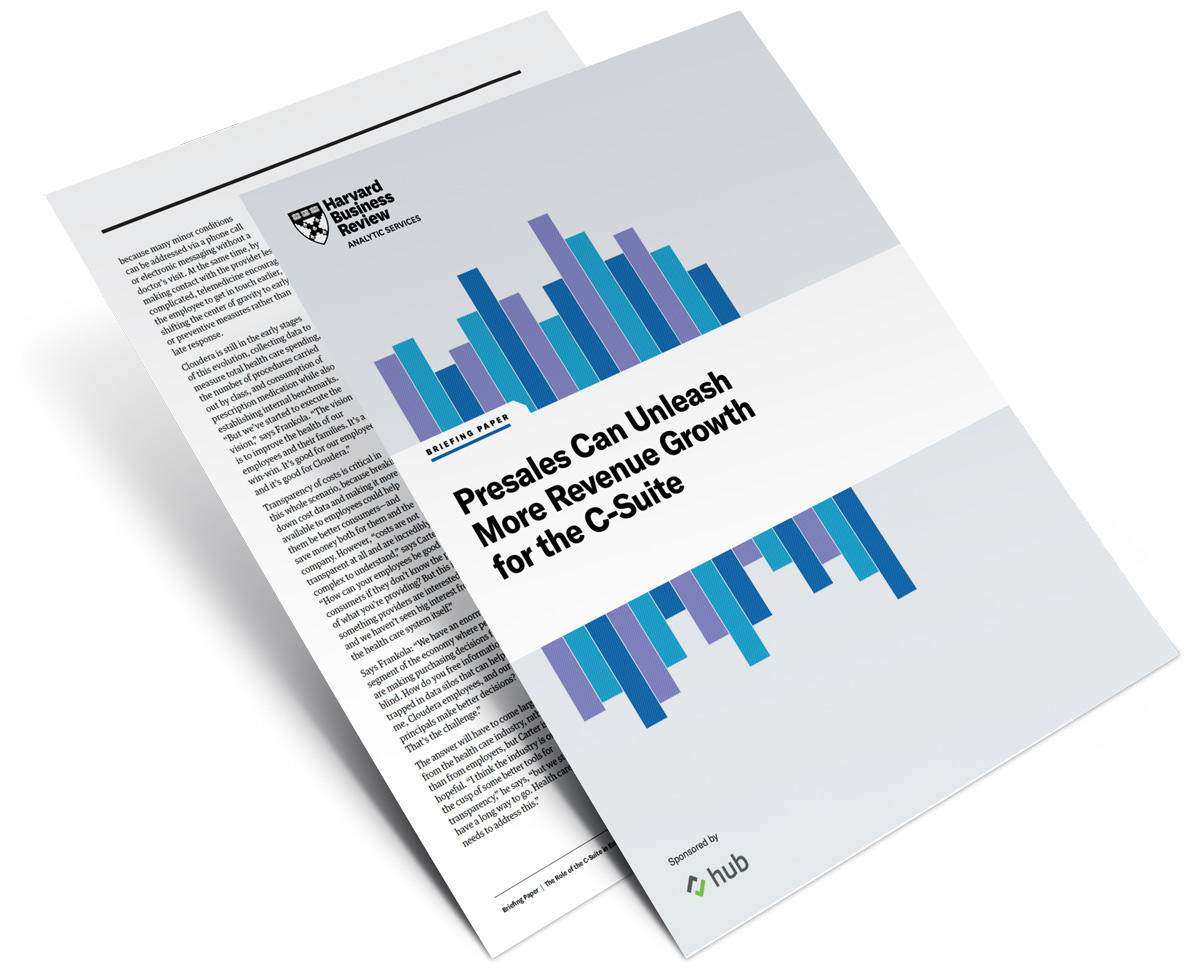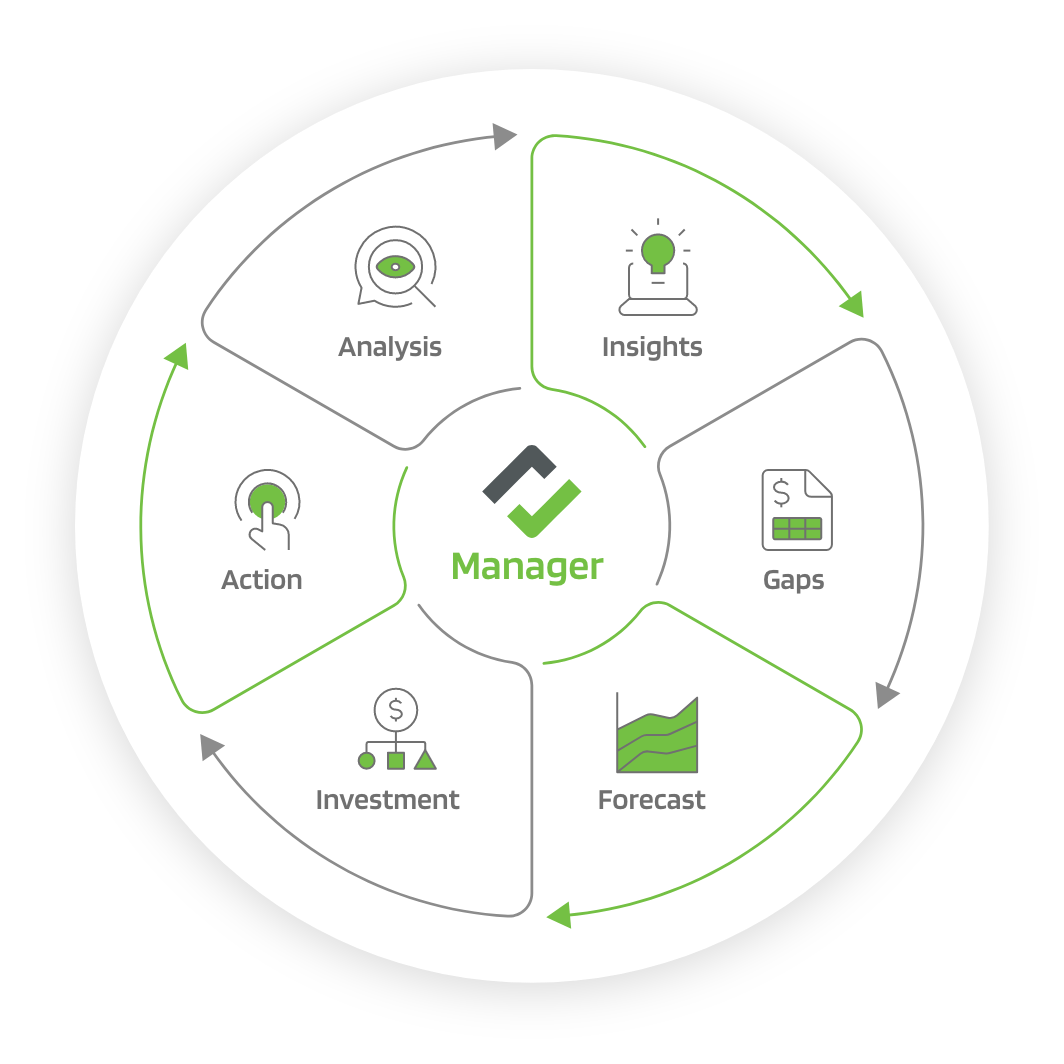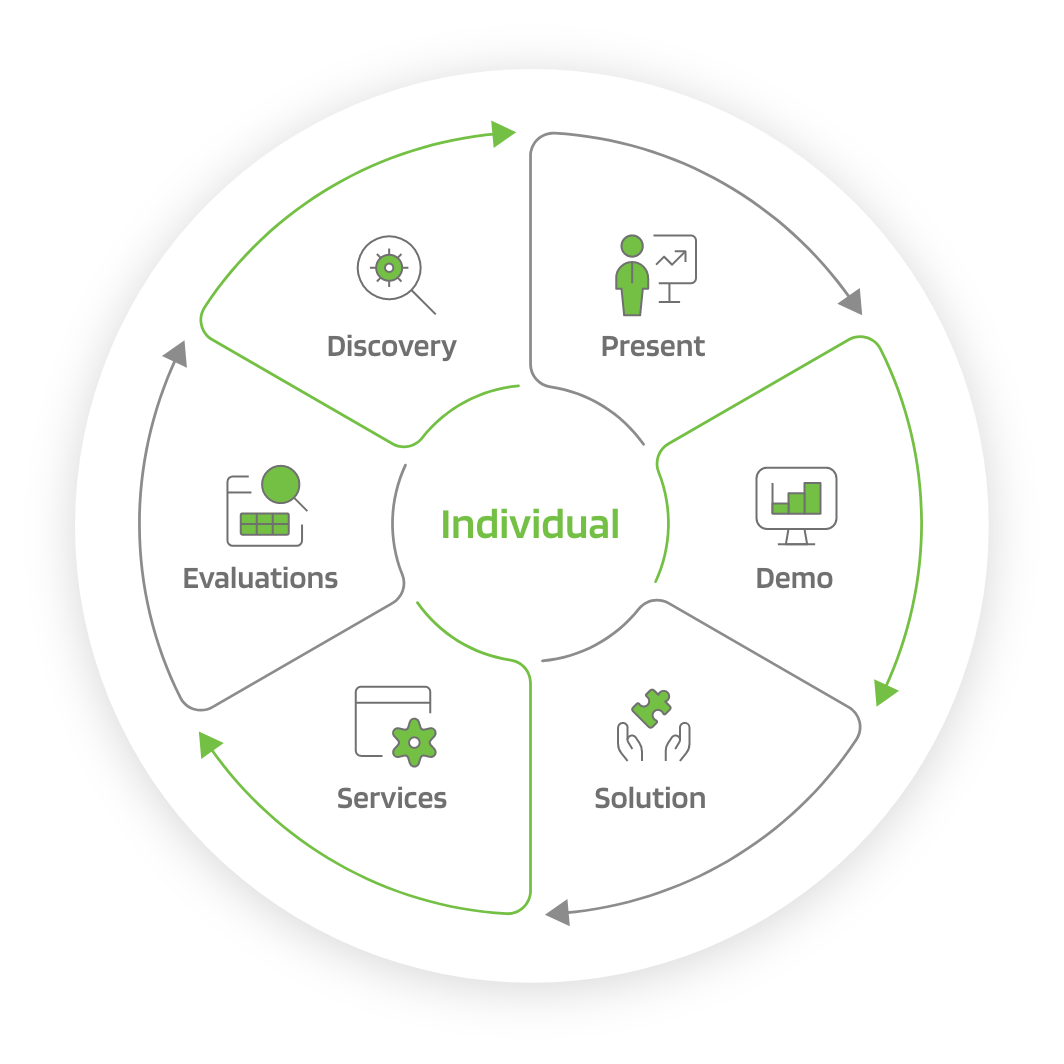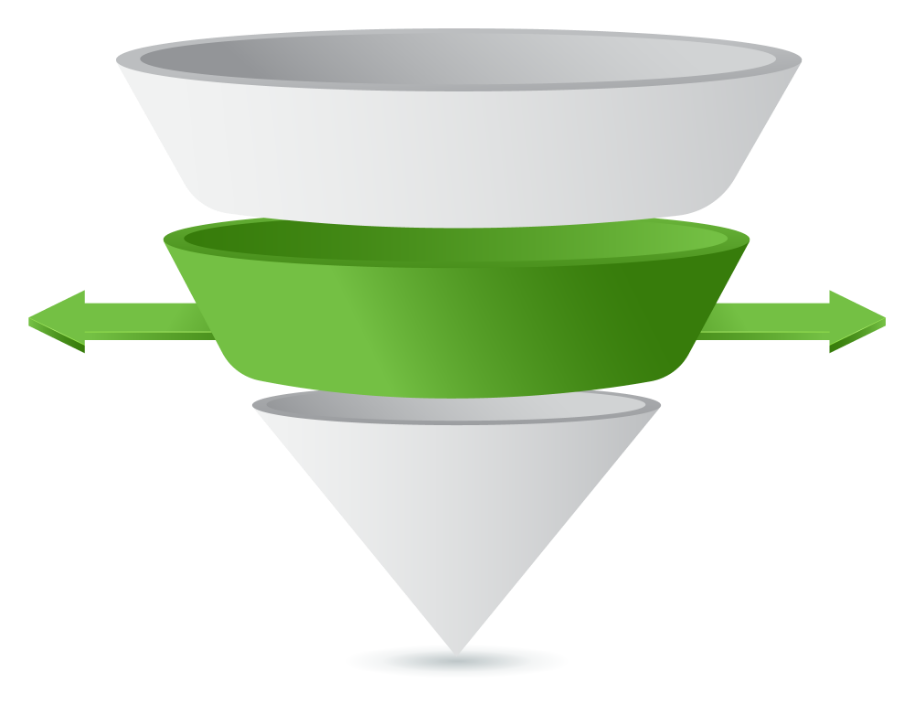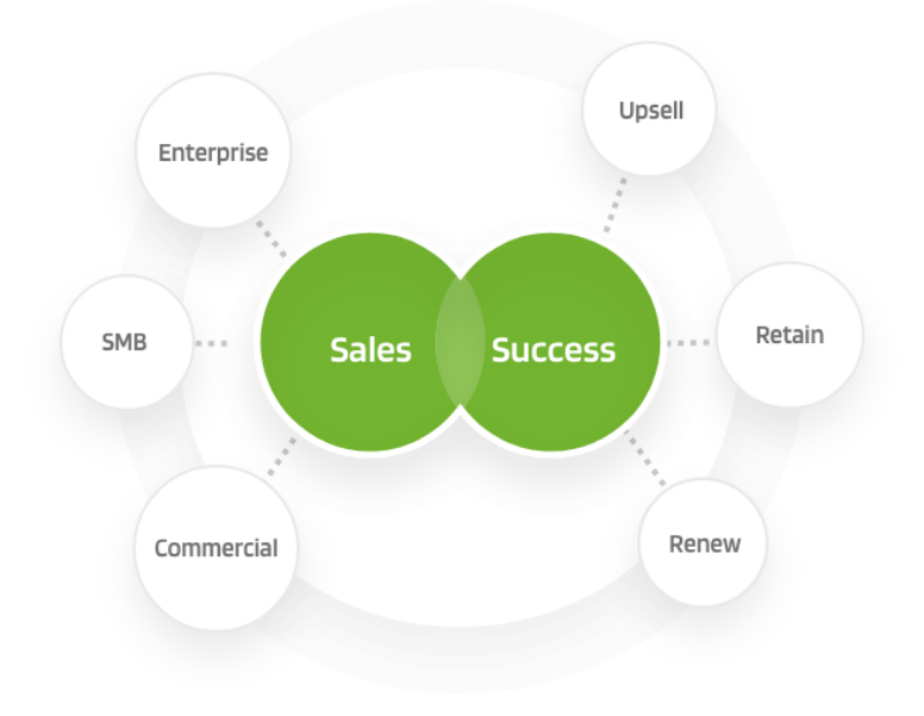
Technical Sales by Hub
Digitally Transform Technical Sales Work And Win More Business

Your technical sales team may be able to gain significant productivity advantages when selling hardware, software and SaaS products, see how it can apply to your business.
Today’s modern high-tech product packaging is significantly transforming companies. Even large-cap companies that have traditionally sold hardware have become connected hardware companies, SaaS-managed, with subscription-based pricing. The waterfall implications of these shifts have affected everything from revenue recognition to how sales and marketing thinks about their go-to-market (GTM) stages.
As you can imagine, technical sales has felt the impact of this transformation. As a highly respected sales leader for a mid-cap company recently put it to me, “The evolution of product packaging is forcing our technical sales team to either adapt or be killed by our competition.” He further explained that speed is the name of the game, and that technical sales must be able to streamline their ability for time to value (TTV). That is, they need to demonstrate product value quickly, because this has a direct impact on velocity towards time to revenue (TTR).
This post will examine ways that technical sales professionals can evolve their workflows, based on the types of products they have to sell. Let’s first look at the different characteristics of product packages, specifically as it applies to technical sales.
Product Packaging
For illustration purposes, let’s focus on the pre-sales stages of presentation, demo and evaluation that most technical sales professionals are responsible for and look at the different characteristics of hardware, software and software as a service (SaaS).

Historically, it has been common for technical sales to be on-site for all stages, especially for hardware-centric products that support six-figure deals. Some of the justification for this was that prospects wanted to meet the sales team in person to build relationships, and, given the technical nature of the product, you wanted your sales representative and sales engineer on-site. However, times have changed. A prospect’s preferences towards software and software as a service (SaaS) packaging has made it easier to do things remotely. To make purchase decisions, they rely less on relationships with the sales teams and more on product experience. Additionally, advances in tools like video conferencing, and situations like the global Covid pandemic, has pushed technical sales to present, demo and manage evaluations remotely.
So what does this shift to doing business remotely mean? The good news is it creates a massive opportunity to review current technical sales workflows and assess what can be done better. More specifically, technical sales professionals can see what they do manually day to day and determine which of those steps, especially the mundane ones, can be automated.
For illustration purposes let’s look at Dilbert Inc, a fictional company I introduced in another post, “Technical Sales May Be Your Secret Weapon To Gain Sales Efficiency During A Recession,” and see what happens when they automate their manual processes.
Manual vs. Automated
Let’s say that Dilbert Inc. sells three products: a hardware appliance that is managed on-site, a software “soft appliance” that requires on-site installation, and an SaaS product offering. The technical sales team at Dilbert Inc. is a multi-generational team, with a broad set of skills and prospects who will want to purchase all three product packages, at least for the foreseeable future.
In auditing the presentation, demo and evaluation workflows of all three product categories, technical sales realizes the following manual and automation breakdown.

This realization forces technical sales management and VP-level leadership to review the cost of sales calculations and determine if product pricing is correctly established to support the desired profit margins, which can adequately cover manual costs, specifically the cost of sale. Equally valuable, by looking at this breakdown, technical sales can identify new initiatives they can undertake to further automate mundane tasks that distract technical sales from selling. Please note that automation in of itself does not mean that it will do the job of technical sales, Actually, it’s quite the contrary. Automation should do the mundane tasks that technical sales previously did with tools that were outdated, designed for different workflows, or homegrown and patched together.
Summary
Technical sales professionals are a highly valuable, resilient bunch whose talent should not be wasted on manual, mundane tasks when the focus should be on more effective technical selling. As noted on my previous post, “Your Technical Sales Are The Unsung Heroes Of Your Business,” technical sales teams have attempted to automate various functions of their jobs internally, but their reach has been somewhat limited by the product types they sell, the cultural preferences in how business is conducted, and sometimes the lack of internal support from engineering, product, sales and the company’s leadership.
However, today’s way of doing business during COVID-19 forces us to challenge any historical cultural biases and drives the need to automate wherever possible. Technical sales is in a great position to transform itself, especially in the SaaS era. They can automate much of their mundane functions so they can spend more time selling technical value, improving profit margin and growing the business.
Here are ten questions to determine the level of transformation your technical sales should undertake to help your business:
1. What type of product categories do you have?
2. Which ones are your flagship products and get most support from your company?
3. How would you break down manual and automated workflows for technical sales for each stage?
4. Would automating certain functions of your workflow give you a competitive edge?
5. What type of savings could your business recognize by automating?
6. How is your product portfolio evolving? And how can more automation in technical sales help them capitalize on selling those products?
7. Does your competition have higher sales velocity than you do? If so, why?
8. How many internal tools has your technical sales team hacked together to do their jobs?
9. What problems was your technical sales team trying to solve with their own tools?
10. What can you do to support technical sales in further automating tasks so they can be more productive?
Freddy Mangum has held various C-level roles in high-growth companies and is a Venture Consultant with ForgePoint Capital, a $750M early stage venture fund. Freddy currently advises C-suite staff on go-to-market and mentors founders through programs like the Stanford Incubator (StartX).
You can read more of Freddy Mangum’s articles on LinkedIn here.
